The Mi-24 is one of the most widely-known assault helicopter gunships, attack helicopter and low-capacity troop transport in the world, and remains in service with at least 50 air arms. Although production of Mi-24 has been ceased in 1991, it is considered to be one of the best and most advanced attack helicopters ever made.The Mi-24 has a 23-mm twin-barrel cannon, and carries 9M17P Skorpion (AT-2 Swatter), 9M114 Shturm (AT-6 Spiral) anti-tank guided missiles.The Mi-24 (Russian: Миль Ми-24; NATO reporting name: Hind) went from drawing board in 1968 to first test-flights in less than eighteen months. The first models were delivered to the armed forces for evaluation in 1971. The Hind-A did have a number of problems: lateral roll, weapon sighting problems, and limited field of view for the pilot. A heavy redesign of the aircraft front section solved most of these problems.
The Boeing AH-64 Apache is a four-blade, twin-turboshaft attack helicopter known to be the preeminent and most powerful anti-armor weapon system in the Gulf War. The latest version of AH-64D is the AH-64E Apache Guardian. Until 2012 it was designated as AH-64D Block III. The AH-64 Apache has a 30-mm M230 cannon, and carries 16 x AGM-114L Hellfire 2 anti-tank missiles, 4 x Stinger, Mistral of 2 x AIM-9 Sidewinder air-to-air missiles or 2 x AGM-122 Sidearm anti-radar missiles and 19-shot Hydra 70 rocket pods.The Apache originally started as the Model 77 developed by Hughes Helicopters for the United States Army's Advanced Attack Helicopter program to replace the AH-1 Cobra. The prototype YAH-64 was first flown on 30 September 1975. The U.S. Army selected the YAH-64 over the Bell YAH-63 in 1976, and later approved full production in 1982. After purchasing Hughes Helicopters in 1984, McDonnell Douglas continued AH-64 production and development. The helicopter was introduced to U.S. Army service in April 1986. The first production AH-64D Apache Longbow, an upgraded Apache variant, was delivered to the Army in March 1997. Production has been continued by Boeing Defense, Space & Security; over 2,000 AH-64s have been produced to date
First ever dedicated attack helicopter to be produced in Western Europe. Agusta A129 Mangusta, one of the most advanced attack helicopters, is a two-seat, twin-engined, lightweight battlefield helicopter developed specifically for the anti-armor attack role.It has a 20-mm cannon; can carry podded 12.7-mm machine guns. It carries 8 x TOW-2A anti-tank missiles, 52 x 70-mm or larger 81-mm Medusa rockets.The Agusta A129 Mangusta (English: Mongoose) is an attack helicopter originally designed and produced by Italian company Agusta. It has the distinction of being the first attack helicopter to be designed and produced wholly in Europe. It has continued to be developed by AgustaWestland, the successor company to Agusta. The A129 has undergone several combat deployments since entering service with the Italian Army in the 1990s. A derivative of the A129, the TAI/AgustaWestland T129 ATAK, is being developed by Turkish Aerospace Industries (TAI) in cooperation with AgustaWestland. TAI will produce the T129 for the Turkish Army and potentially export customers
The Rooivalk is a next-generation attack helicopter from Denel Aviation of South Africa. The AH-2 Rooivalk can carry a range of weapons depending on the mission profile. It is equipped with a 20-mm Armscor cannon, and carries 4 x 4 -round launchers for TOW or Denel ZT-6 Mokopa anti-tank missiles. It also carries launchers with 70-mm un-operated rockets in place of the missiles.The Denel Rooivalk (previously designated AH-2 and CSH-2) is an attack helicopter manufactured by Denel Aviation of South Africa. Rooivalk is Afrikaans for "Red Kestrel". Development of the type began in 1984 by the Atlas Aircraft Corporation, its development is closely connected to the Atlas Oryx transport helicopter, both aircraft being based on the Aérospatiale Puma and having started development at the same time. Development of the Rooivalk was protracted due to the impact of limited budgets during the 1990s, and a desire to produce a highly advanced attack helicopter. The South African Air Force (SAAF) ordered 12 Rooivalks, designated the Rooivalk Mk 1 in SAAF service, the first of was officially handed over in April 2011. The helicopters are flown by 16 Squadron, which is based at AFB Bloemspruit near Bloemfontein. you can also see this video
6. Z-10 (China)
The Z-10 is the new and the first dedicated Chinese attack helicopter. It is believed that it is in the same class as the A-129 Mangusta and the AH-2 Rooivalk. It has a standard gunship configuration with a narrow fuselage and stepped tandem cockpits.The Z-10, also called WZ-10, is an attack helicopter developed by the People's Republic of China. It is designed primarily for anti-tank warfare missions but has secondary air-to-air capability as well. It was designed by Kamov design bureau of Russia under a contract with the Chinese government. It was further developed and flight tested by the 602nd Research Institute under Wu Ximing and is being built by Changhe Aircraft Industries Corporation The Z-10 has a 30 mm cannon and carries HJ-9 or HJ-10 anti-tank missiles, TY-90 air-to-air missiles and unoperated rocket pods.The Z-10 program was called the Special Armed Project , a short form for Special Use Armed Helicopter Project . Development was kept under stricter secrecy than the Chengdu J-10 fighter. Nearly ¥ 4 billion was initially invested and the WZ-1- became one of the most important programs begun in the 9th 5-yr plan.
One of the most advanced attack helicopters, Eurocopter Tiger is currently in service with the Germany and France’s air forces. It’s a four-bladed, twin-engined, medium-weight attack helicopter which first entered service in 2003.The Tiger has the distinction of being the first all-composite helicopter developed in Europe; even the earliest models also incorporate other advanced features such as a glass cockpit, stealth technology, and high agility to increase its survivability. Improved variants have since entered service, outfitted with more powerful engines and compatible with a wider range of weapons. Since the type's introduction to service, Tigers have been used in combat in Afghanistan, Libya, and Mali.It has a 30 mm cannon and carries eight HOT 2, HOT 3 or Trigat 2 anti-tank missiles; four Stinger 2 or Mistral short-range air-to-air missiles, 68 x 68-mm rockets and podded 12.7-mm guns.
The Russian all-weather, day-night, two-seat anti-armor, Mil Mi-28 Havoc is one of the most advanced heavily-armored attack helicopters. It is a dedicated attack helicopter with no intended secondary transport capability. It is in service with the Russian army since 2006.In 1972, following completion of the Mil Mi-24, development began on a unique attack helicopter with transport capability. The new design had a reduced transport capability (3 troops instead of 8) and omitted the cabin, to provide better overall performance and higher top speed. Improved performance was important for its intended role fighting against tanks and enemy helicopters and covering helicopter landing operations. Initially, many different designs were considered, including an unconventional project with two main rotors, placed with engines on tips of wings (in perpendicular layout); and in one similarity with the late 1960s-era American Lockheed AH-56 Cheyenne attack helicopter design, with an additional pusher propeller on the tail. In 1977, a preliminary design was chosen, in a classic single-rotor layout. It lost its similarity to the Mi-24, and even the canopies were smaller, with flat surfaces.With maximum speed of 320 km/h, Mil Mi-28 Havoc has a 30-mm cannon and carries 9 M114 Shturm-C, 9 M120 / 9 M121F Vikhr or 9 A-2200 anti-tank guided missiles.
The newer, improved, two-seat version of the Ka-50, is one of the fastest and most advanced attack helicopters in the world. Kamov Ka-52 Hokum-B is a multi-role, incredibly strong all-weather attack helicopter. One of the most maneuverable, next-generation attack helicopters, capable operating in daytime and at night.The Ka-52 uses a 30-mm cannon (460 rounds), 12 Vikhr (AT-9 Spiral) anti-tank missiles or four Igla-V air-to-air missiles, and can carry quite a few unguided rockets and Igla air-to-air missiles.The Kamov Ka-52 "Black Shark" is a single-seat Russian attack helicopter with the distinctive coaxial rotor system of the Kamov design bureau. It was designed in the 1980s and adopted for service in the Russian army in 1995. It is currently manufactured by the Progress company in Arsenyev. It is being used as a heavily armed scout helicopter
The world’s most advanced attack helicopter, Bell AH-1Z is a modern version the AH-1 Cobra. Bell AH-1Z flies with the most advanced aircraft weapons and survivability equipment in the world. It is the only attack helicopter with a fully-integrated air-to-air missile capability.The Bell AH-1Z Viper is a twin-engine attack helicopter based on the AH-1W SuperCobra, that was developed for the United States Marine Corps as part of the H-1 upgrade program. The AH-1Z features a four-blade, bearingless, composite main rotor system, uprated transmission, and a new target sighting system. The AH-1Z, one of the latest members of the prolific Huey family, is also called "Zulu Cobra", in reference to its variant letter based on the military phonetic alphabet (Zulu for Z).The Bell AH-1Z Viper has a 20-mm (with 750 rounds) three-barrel cannon and carries AGM-114A/B/C anti-tank missiles, AGM-114F anti-ship missiles, AIM-9 air-to-air missiles, pods with 70-mm unoperated rockets, free-fall bombs.
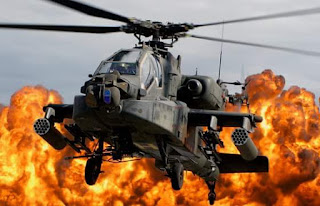 As far as best attack helicopters go, the American four-blade, twin-turboshaft with a tailwheel-type landing gear arrangement and a tandem cockpit for a two-man crew, Boeing AH-64E Apache Guardian is the most advanced ever built.The Boeing AH-64 Apache is an American four-blade, twin-turboshaft attack helicopter with a tailwheel-type landing gear arrangement and a tandem cockpit for a two-man crew. It features a nose-mounted sensor suite for target acquisition and night vision systems. It is armed with a 30 mm (1.18 in) M230 chain gun carried between the main landing gear, under the aircraft's forward fuselage. It has four hardpoints mounted on stub-wing pylons, typically carrying a mixture of AGM-114 Hellfire missiles and Hydra 70 rocket pods. The AH-64 has a large amount of systems redundancy to improve combat survivability.The Apache originally started as the Model 77 developed by Hughes Helicopters for the United States Army's Advanced Attack Helicopter program to replace the AH-1 Cobra. The prototype YAH-64 was first flown on 30 September 1975. The U.S. Army selected the YAH-64 over the Bell YAH-63 in 1976, and later approved full production in 1982. After purchasing Hughes Helicopters in 1984, McDonnell Douglas continued AH-64 production and development. The helicopter was introduced to U.S. Army service in April 1986. The first production AH-64D Apache Longbow, an upgraded Apache variant, was delivered to the Army in March 1997. Production has been continued by Boeing Defense, Space & Security; over 2,000 AH-64s have been produced to date.With a maximum speed of 300 km/h, AH-64E Apache Guardian has a 30-mm cannon and carries 16 AGM-114L Hellfire, 2 anti-tank missiles, four AIM-92 Stinger or two AIM-9 Sidewinder air-to-air missiles, two AGM-122 Sidearm anti-radiation missiles and 19-shot Hydra 70 rocket pod.
As far as best attack helicopters go, the American four-blade, twin-turboshaft with a tailwheel-type landing gear arrangement and a tandem cockpit for a two-man crew, Boeing AH-64E Apache Guardian is the most advanced ever built.The Boeing AH-64 Apache is an American four-blade, twin-turboshaft attack helicopter with a tailwheel-type landing gear arrangement and a tandem cockpit for a two-man crew. It features a nose-mounted sensor suite for target acquisition and night vision systems. It is armed with a 30 mm (1.18 in) M230 chain gun carried between the main landing gear, under the aircraft's forward fuselage. It has four hardpoints mounted on stub-wing pylons, typically carrying a mixture of AGM-114 Hellfire missiles and Hydra 70 rocket pods. The AH-64 has a large amount of systems redundancy to improve combat survivability.The Apache originally started as the Model 77 developed by Hughes Helicopters for the United States Army's Advanced Attack Helicopter program to replace the AH-1 Cobra. The prototype YAH-64 was first flown on 30 September 1975. The U.S. Army selected the YAH-64 over the Bell YAH-63 in 1976, and later approved full production in 1982. After purchasing Hughes Helicopters in 1984, McDonnell Douglas continued AH-64 production and development. The helicopter was introduced to U.S. Army service in April 1986. The first production AH-64D Apache Longbow, an upgraded Apache variant, was delivered to the Army in March 1997. Production has been continued by Boeing Defense, Space & Security; over 2,000 AH-64s have been produced to date.With a maximum speed of 300 km/h, AH-64E Apache Guardian has a 30-mm cannon and carries 16 AGM-114L Hellfire, 2 anti-tank missiles, four AIM-92 Stinger or two AIM-9 Sidewinder air-to-air missiles, two AGM-122 Sidearm anti-radiation missiles and 19-shot Hydra 70 rocket pod.
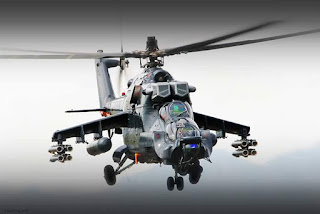
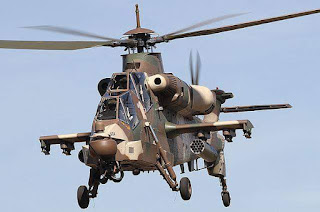
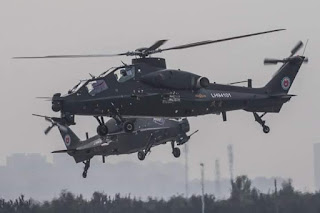
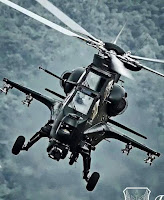
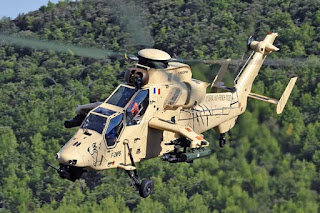
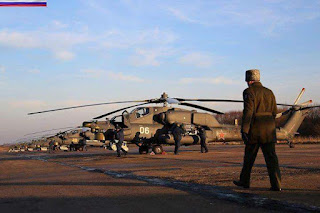
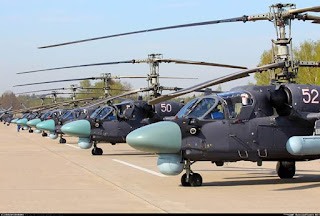
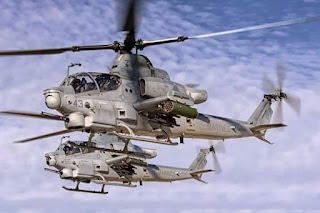
0 comments:
Post a Comment